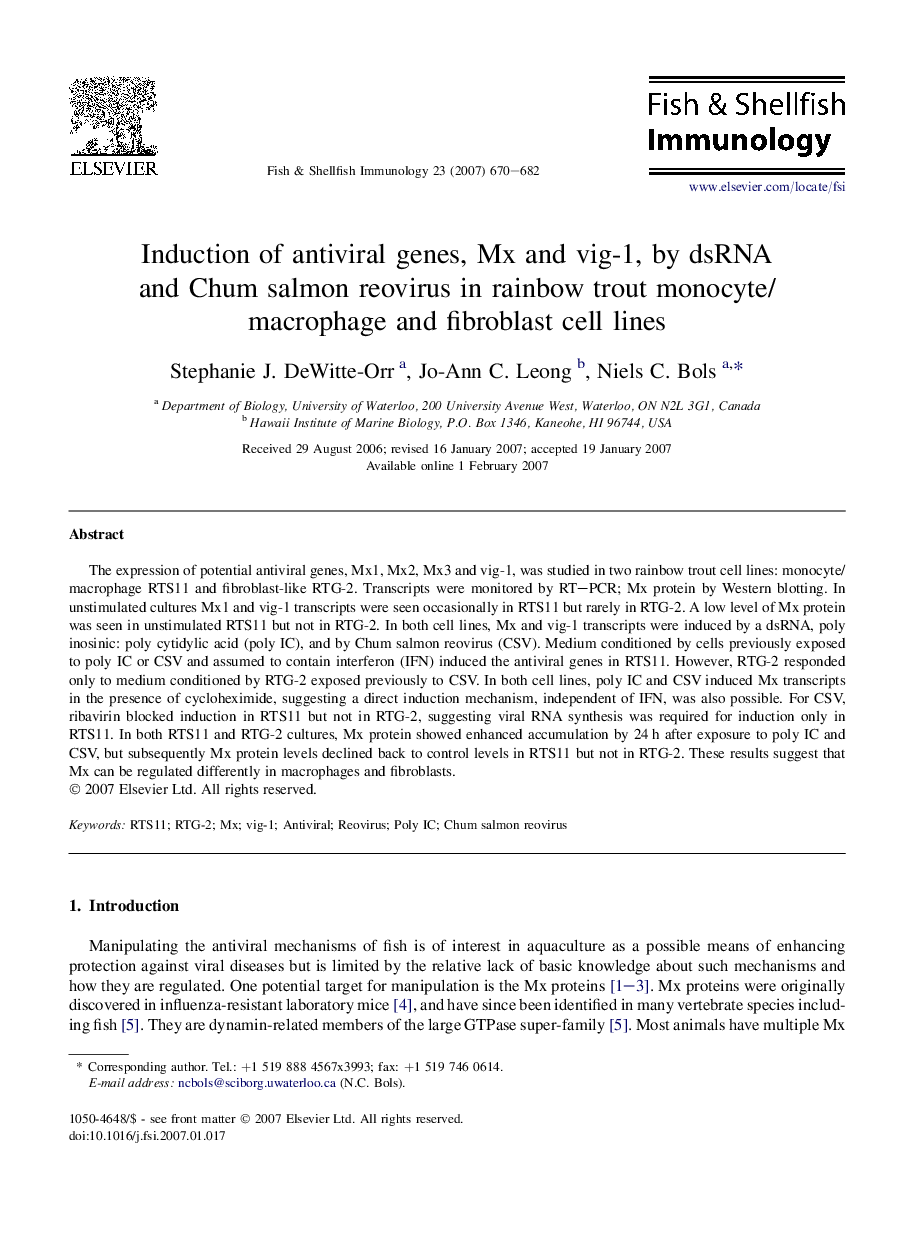| Article ID | Journal | Published Year | Pages | File Type |
|---|---|---|---|---|
| 2433613 | Fish & Shellfish Immunology | 2007 | 13 Pages |
The expression of potential antiviral genes, Mx1, Mx2, Mx3 and vig-1, was studied in two rainbow trout cell lines: monocyte/macrophage RTS11 and fibroblast-like RTG-2. Transcripts were monitored by RT–PCR; Mx protein by Western blotting. In unstimulated cultures Mx1 and vig-1 transcripts were seen occasionally in RTS11 but rarely in RTG-2. A low level of Mx protein was seen in unstimulated RTS11 but not in RTG-2. In both cell lines, Mx and vig-1 transcripts were induced by a dsRNA, poly inosinic: poly cytidylic acid (poly IC), and by Chum salmon reovirus (CSV). Medium conditioned by cells previously exposed to poly IC or CSV and assumed to contain interferon (IFN) induced the antiviral genes in RTS11. However, RTG-2 responded only to medium conditioned by RTG-2 exposed previously to CSV. In both cell lines, poly IC and CSV induced Mx transcripts in the presence of cycloheximide, suggesting a direct induction mechanism, independent of IFN, was also possible. For CSV, ribavirin blocked induction in RTS11 but not in RTG-2, suggesting viral RNA synthesis was required for induction only in RTS11. In both RTS11 and RTG-2 cultures, Mx protein showed enhanced accumulation by 24 h after exposure to poly IC and CSV, but subsequently Mx protein levels declined back to control levels in RTS11 but not in RTG-2. These results suggest that Mx can be regulated differently in macrophages and fibroblasts.
